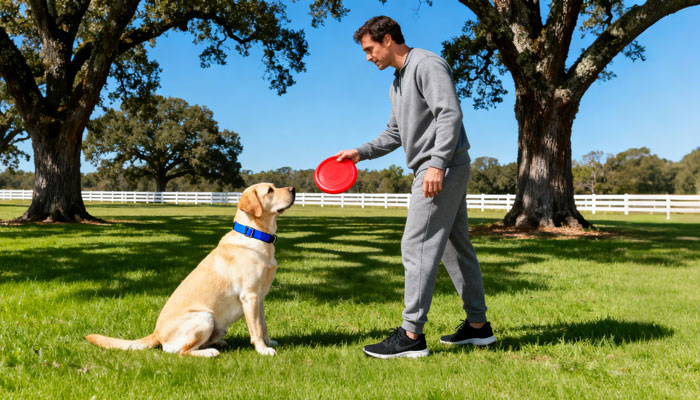What is the best time for dog training

Generally speaking, the ideal time to begin dog training is around 70 days after a puppy is born.
Starting dog training too early, when the puppy’s body is not yet fully developed, makes it difficult for them to handle the intensity of training. Conversely, starting dog training too late allows many bad habits to form, requiring significant time to correct them later and increasing the difficulty of training. Additionally, daily dog training should commence from the day the puppy arrives home, progressing gradually and steadily. At this stage, the puppy has not yet acquired any bad habits and possesses relatively less physical strength, making it easier to guide during training and less demanding for the owner.
1. 3-5 Months Old: Basic Etiquette and Obedience Dog Training
The core of training during this stage is establishing basic manners and obedience, helping the puppy develop an understanding of rules. This includes teaching commands like sit, down, stand, heel, follow, bark, stay, and shake hands. Key behavioral training should also focus on toilet training in designated areas and teaching the dog to refuse food. These form the foundation for future coexistence and care.
2. 6-8 Months Old: Low-Intensity Sports Dog Training
As dogs reach 6-8 months, their physical capabilities strengthen, allowing for low-intensity running and jumping exercises. This type of training builds physical fitness while channeling excess energy, preventing destructive behaviors like chewing furniture or random biting. It also reinforces earlier obedience training.
3. 8 Months to 1.5 Years Old: Professional Skill Dog Training
Between 8 months and 1.5 years, dogs reach greater mental and physical maturity, making them ready for advanced training like obstacle courses. Activities such as hurdle jumping and tire ring weaving enhance coordination and focus. If desired, this stage can also introduce more complex skills to enrich the training outcomes.
Generally, a dog’s fastest growth occurs within the first year after birth. This year is also the optimal time for dog training. However, don’t assume that because a dog is older, it can no longer be trained. In fact, dogs of any age can benefit from dog training. That said, compared to starting training as a puppy, training an adult dog requires more physical effort and greater patience to help them gradually adapt and master the exercises.
One final reminder: Regardless of the type of dog training you undertake, your persistence is paramount, while also fully considering your dog’s receptiveness. Training sessions for each command should not be too long—5 to 15 minutes is ideal. Repeat the training multiple times until your dog forms a direct conditioned reflex to your commands and gestures. This signifies that the dog training session has been successful.
admin
-
Sale!

Washable Pet Cooling Pad for Cats and Dogs
$10.99Original price was: $10.99.$9.99Current price is: $9.99. This product has multiple variants. The options may be chosen on the product page -
Sale!

Washable Cat Window Hammock Cooling Bed
$23.99Original price was: $23.99.$22.99Current price is: $22.99. -
Sale!

Tropical Amphibian Rainforest Tank, Lizard Cage
$38.99Original price was: $38.99.$36.99Current price is: $36.99. -
Sale!

Silent 4-in-1 Waterproof Charging Dog Hair Trimmer
$49.88Original price was: $49.88.$47.99Current price is: $47.99.